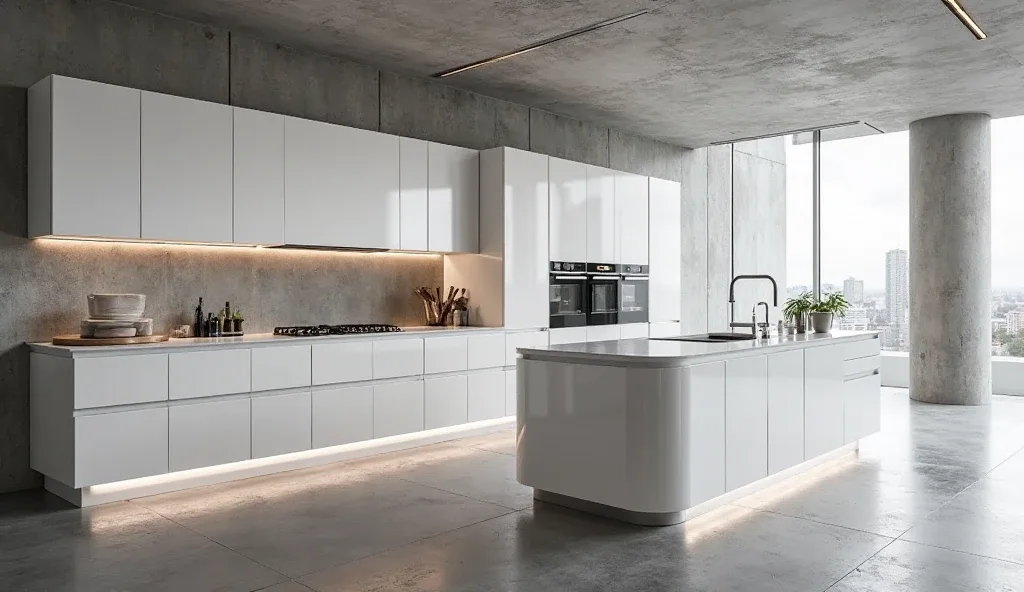Walk into most contemporary kitchens today and you’ll encounter the same predictable layout: endless rows of identical cabinets lined up like storage boxes, with little consideration for how people actually cook, entertain, or live in these spaces. These kitchens might have expensive appliances and premium countertops, but they’re doing absolutely nothing to create the kind of thoughtful environments that make cooking feel inspiring and daily routines more efficient.
Here’s what the smartest kitchen designers understand right now: the future of kitchen design isn’t about more cabinets—it’s about smarter, more purposeful units that work harder while taking up less visual and physical space. While traditional kitchen layouts focus on storage quantity, innovative kitchen units prioritize functionality, flexibility, and sophisticated design that enhances both daily cooking and entertaining experiences.
The most compelling contemporary kitchens feature strategic unit designs that serve multiple purposes while maintaining clean, uncluttered aesthetics. They’re spaces where every element has been carefully considered for both practical function and visual impact, where storage solutions work seamlessly within beautiful design frameworks, and where cooking becomes more enjoyable because everything has been designed to support rather than complicate daily routines.
Modern kitchen unit design celebrates the intersection of form and function while leveraging advanced materials, hidden storage solutions, and flexible configurations that adapt to changing needs and evolving lifestyles. From floating islands that create dramatic focal points to modular systems that maximize efficiency in compact spaces, thoughtful unit design can make any kitchen feel more spacious, more organized, and infinitely more sophisticated.
Ready to discover how strategic kitchen unit planning can revolutionize both the functionality and beauty of your cooking space while creating environments that support everything from quick weeknight dinners to elaborate weekend entertaining?
The Science of Efficient Kitchen Workflow
Understanding how thoughtful kitchen unit design affects daily cooking experiences goes far beyond simple storage considerations. Well-planned units can dramatically improve cooking efficiency, reduce stress, and create more enjoyable food preparation experiences through strategic placement and purposeful functionality.
Work Triangle Optimization Through Strategic Placement – The most effective kitchen units support natural cooking workflows by positioning storage, preparation, and cooking elements within easy reach of each other. Modern unit design considers how people actually move through cooking tasks while minimizing unnecessary steps and reducing physical strain during meal preparation.
Visual Weight and Spatial Perception – Kitchen units significantly impact how large or cramped spaces feel through their visual weight, color choices, and proportional relationships. Floating units create airiness, while floor-to-ceiling designs maximize storage without overwhelming spaces. Strategic use of open and closed storage creates visual breathing room within functional frameworks.
Flexibility and Adaptability Planning – Contemporary lifestyles require kitchen units that can adapt to different activities—from intimate family meals to large gatherings. The best unit designs provide flexibility through modular components, adjustable shelving, and multi-functional elements that serve various needs without requiring permanent reconfiguration.
Material Psychology and Maintenance Reality – Different materials and finishes affect both the emotional experience of cooking and the practical reality of kitchen maintenance. Understanding how various surfaces age, clean, and wear ensures kitchen units remain beautiful and functional over time while supporting rather than complicating daily routines.
Creating Architectural Interest Through Functional Design
The difference between basic kitchen storage and sophisticated unit design lies in understanding how functional elements can become architectural features that enhance overall interior design while improving practical functionality.
Floating and Suspended Elements – Modern engineering allows kitchen units to appear to float or suspend from walls and ceilings, creating dramatic visual effects while maintaining full functionality. These techniques make spaces feel larger and more sophisticated while providing innovative storage solutions that don’t sacrifice floor space.
Integrated Technology and Hidden Systems – Contemporary kitchen units can seamlessly integrate advanced technology, lighting systems, and mechanical elements that remain invisible when not in use. Hidden charging stations, integrated sound systems, and automated storage solutions create sophisticated functionality without visual clutter.
Material Mixing for Visual Interest – The most compelling kitchen units combine different materials—wood with metal, stone with glass, matte with glossy finishes—to create sophisticated visual complexity while maintaining functional coherence. Strategic material choices can define different zones within open layouts while maintaining overall design unity.
Lighting Integration for Functionality and Atmosphere – Kitchen units provide opportunities for strategic lighting integration that improves both task performance and atmospheric appeal. Under-cabinet lighting, integrated accent lights, and hidden illumination systems create beautiful effects while making cooking tasks safer and more enjoyable.
Balancing Storage Needs with Design Aesthetics
The challenge with modern kitchen unit design is maximizing storage efficiency while maintaining the clean, sophisticated aesthetics that contemporary lifestyles demand. The most successful designs hide necessary storage within beautiful frameworks that enhance rather than compromise visual appeal.
Hidden Storage Maximization – Contemporary kitchen units excel at hiding storage behind seamless surfaces that maintain clean visual lines. Deep drawers, pull-out pantries, and concealed compartments provide extensive storage while supporting minimalist aesthetic preferences that reduce visual clutter.
Open Display Strategy – Strategic open shelving and display areas allow kitchen units to showcase beautiful dishes, glassware, and cooking accessories while providing easy access to frequently used items. The key is curating displayed items to enhance rather than clutter the overall design aesthetic.
Appliance Integration Philosophy – Modern kitchen units can seamlessly integrate appliances behind custom panels that maintain design continuity while providing full functionality. This approach creates sophisticated environments where technology serves design rather than dominating it.
Maintenance and Durability Planning – Kitchen units must withstand daily use while maintaining their beauty over time. Choose materials and finishes that improve with age rather than showing wear, and design storage systems that make cleaning and maintenance easier rather than more complicated.
13 Kitchen Unit Ideas That Define Contemporary Functionality
Floating Marble Island for Dramatic Focal Points
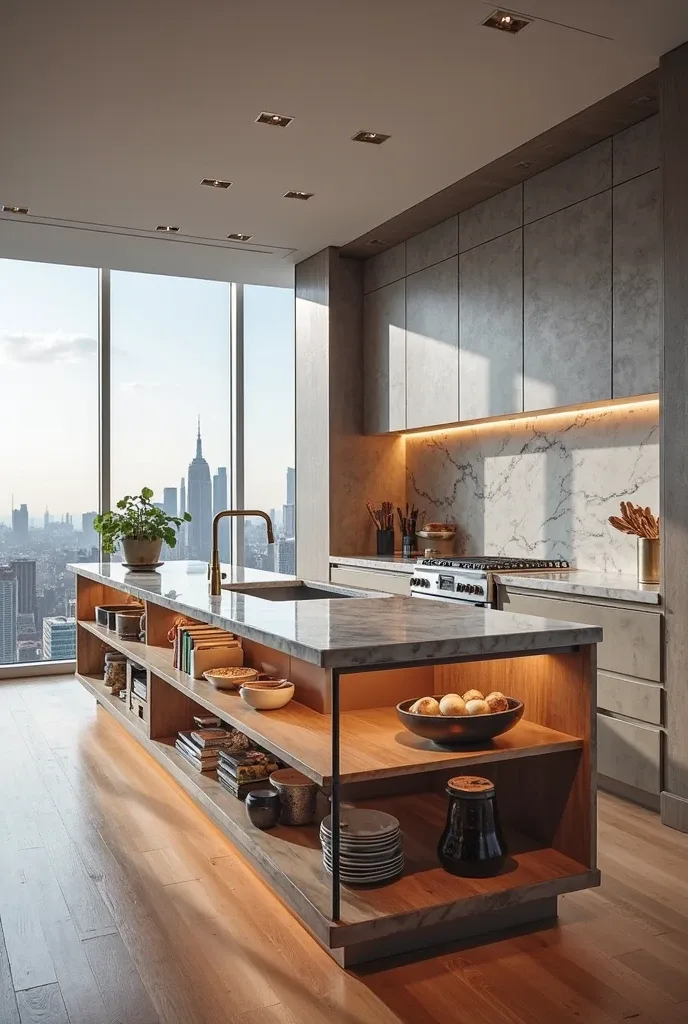
Create stunning architectural centerpieces through floating island units that appear to hover above the floor while providing extensive storage and work surface area. Integrated LED lighting emphasizes the floating effect while hidden structural supports ensure stability and safety.
The floating approach makes kitchens feel more spacious and sophisticated while providing impressive focal points for entertaining. Marble surfaces provide luxury appeal and practical durability while brass fixtures add warmth and sophisticated metallic accents that complement natural stone variations.
This strategy works particularly well in open-concept layouts where kitchen islands serve as room dividers and entertaining centers. The dramatic visual effect creates impressive focal points while extensive storage keeps countertops clear for cooking and serving.
Glass-Framed Pantry Wall for Elegant Storage Display
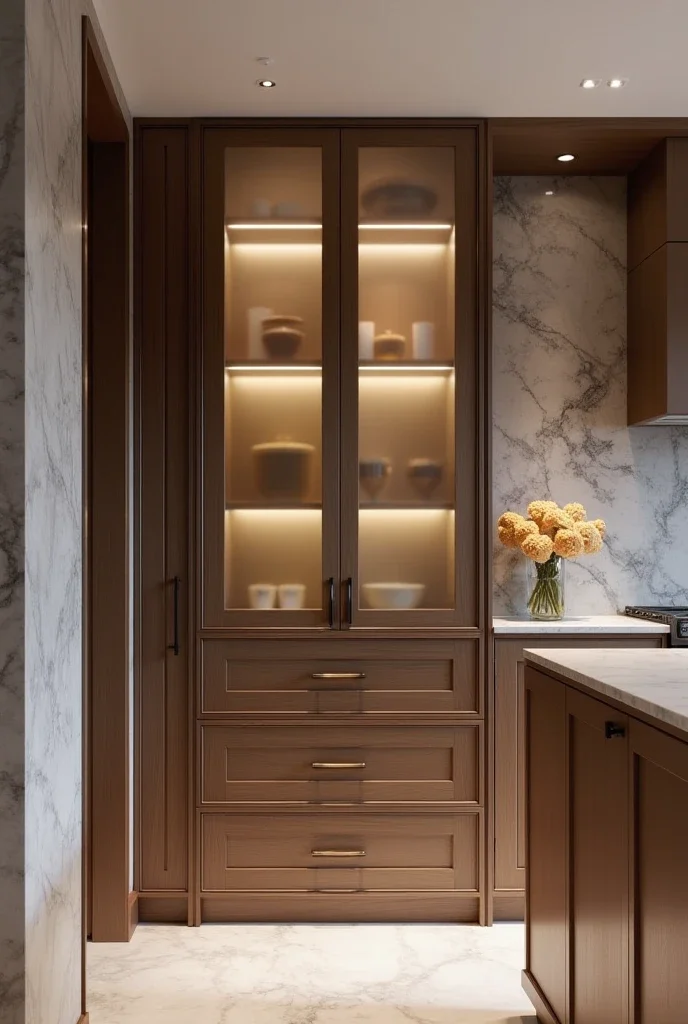
Design sophisticated storage solutions through floor-to-ceiling glass-fronted pantry units that display organized ingredients and serving pieces like gallery installations. Soft-close hardware and integrated lighting create luxury functionality while maintaining visual accessibility to stored items.
The glass approach transforms necessary storage into decorative elements while encouraging organization and making inventory management easier. Frosted glass options provide storage concealment where desired while maintaining light transmission and visual connection throughout kitchen spaces.
This design strategy appeals to homeowners who enjoy cooking and want their ingredient collections and serving pieces to contribute to overall kitchen aesthetics rather than requiring concealment behind solid doors.
Modular Block System for Flexible Efficiency
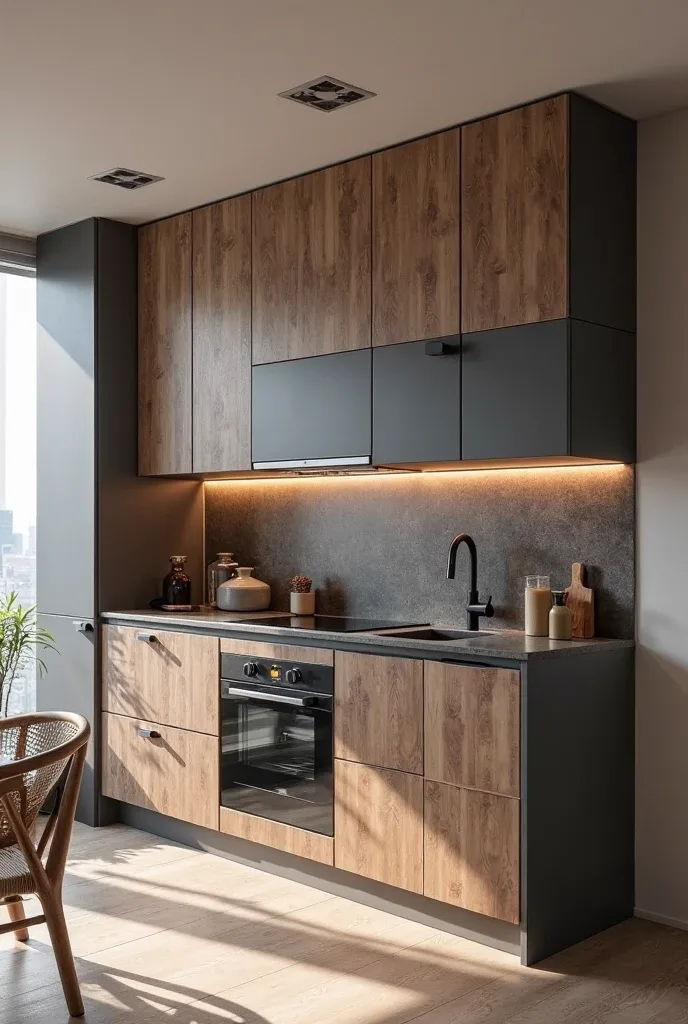
Create adaptable kitchen solutions through modular unit systems that can be reconfigured for different activities and changing needs. Geometric forms and mixed materials provide visual interest while standardized dimensions ensure components work together seamlessly.
The modular approach allows kitchens to evolve with changing lifestyles without requiring complete renovations. Wood grain textures combined with solid colors create sophisticated visual complexity while maintaining functional coherence throughout different configurations.
This strategy works well for homeowners who value flexibility and want kitchen investments that can adapt to different life stages and changing functional requirements without becoming obsolete.
Also Read: 12 Grandmacore Decor Ideas That’ll Bring Timeless Warmth to Your Home
Handle-Free Wall Units for Seamless Minimalism

Achieve clean contemporary aesthetics through push-to-open cabinet systems that eliminate visual hardware while maintaining full functionality. Matte black finishes and seamless surfaces create sophisticated monochromatic environments that emphasize form and proportion.
The handle-free approach reduces visual clutter while creating surfaces that are easier to clean and maintain. Soft-close mechanisms ensure quiet operation while touch-latch systems provide reliable access without compromising aesthetic integrity.
This design strategy appeals to homeowners who prioritize minimalist aesthetics and want kitchen units that feel more like architectural elements than furniture pieces.
Curved Peninsula for Flowing Spatial Design
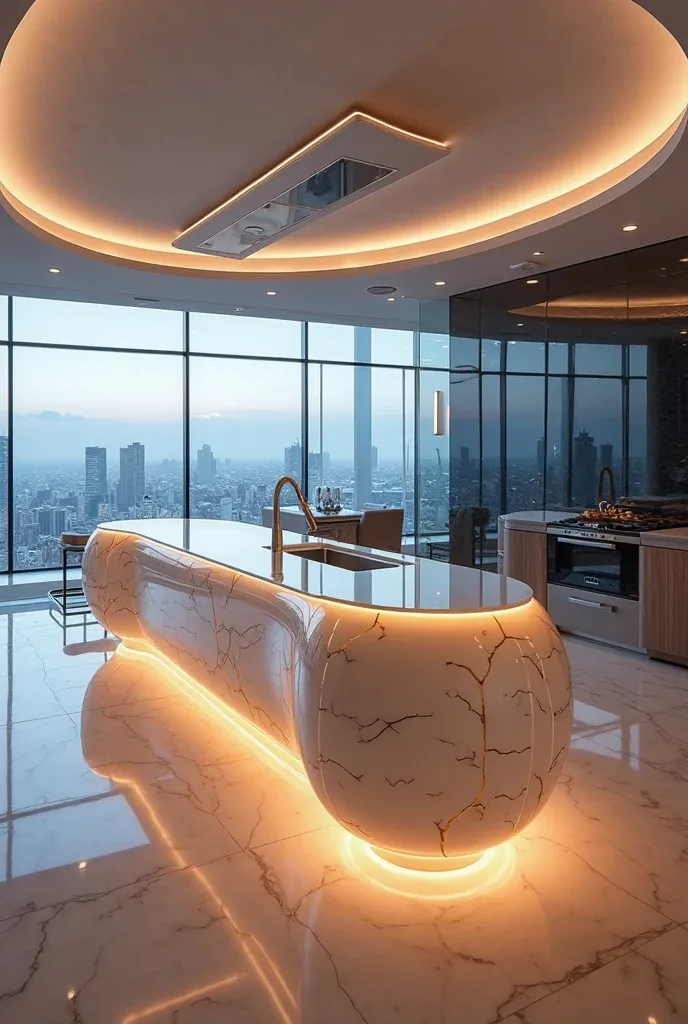
Create organic kitchen layouts through curved peninsula units that soften angular architecture while providing additional storage and work surface area. Glass countertops and sculptural lighting emphasize the flowing forms while maintaining practical functionality.
The curved approach introduces organic elements into typically rectangular kitchen layouts while creating more comfortable conversation areas for casual dining and entertaining. Integrated lighting highlights the sculptural qualities while providing practical task illumination.
This strategy works particularly well in contemporary homes where curved elements can soften hard architectural lines while creating distinctive design features that set kitchens apart from conventional layouts.
Two-Tone Open Shelving for Casual Sophistication
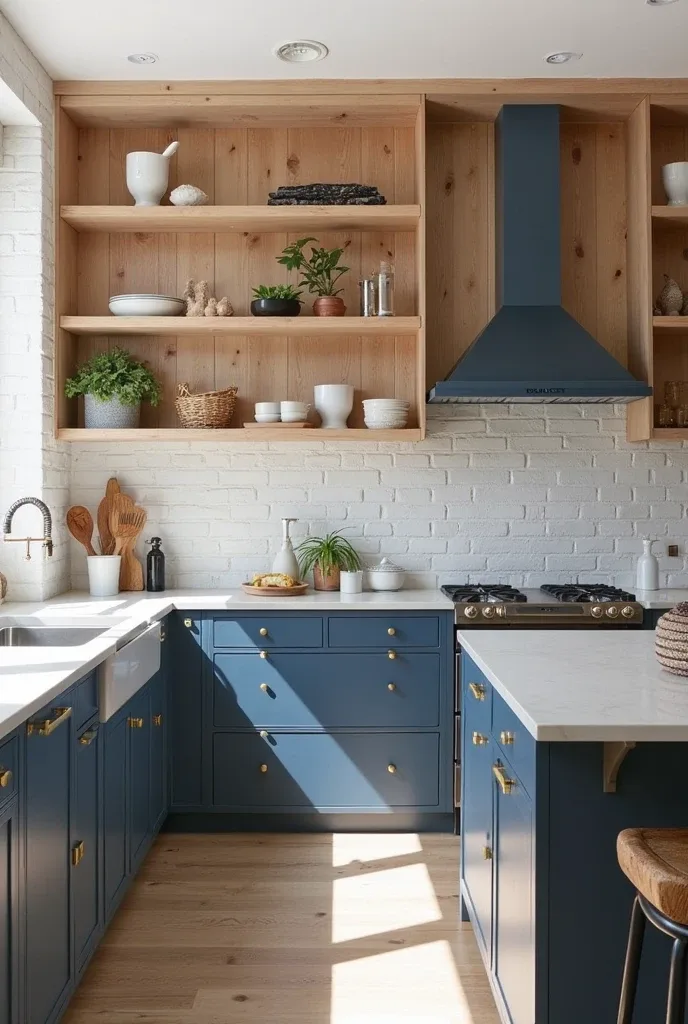
Balance concealed storage with display opportunities through open shelving systems that combine different materials and colors for visual interest. Light wood and navy blue create coastal-modern appeal while maintaining sophisticated color coordination.
The two-tone approach allows homeowners to display beautiful dishes and glassware while concealing less attractive storage behind closed doors. Open shelving creates visual breathing room while encouraging thoughtful curation of displayed items.
This design strategy appeals to homeowners who want their kitchens to feel more casual and accessible while maintaining sophisticated design standards and adequate storage functionality.
Steel and Wood Hybrid for Industrial Elegance
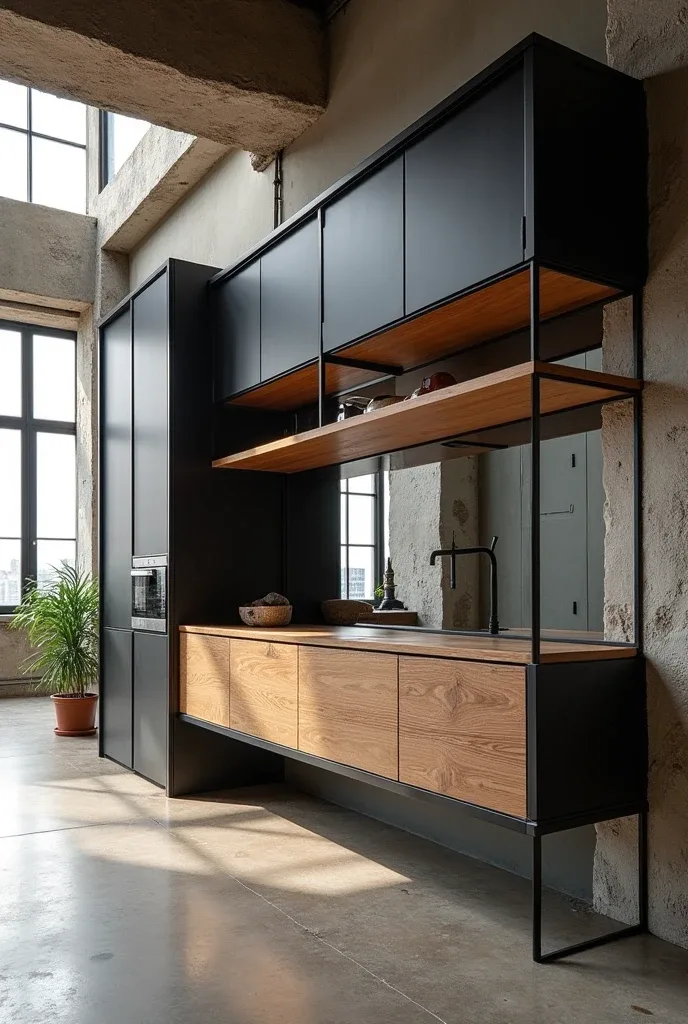
Combine industrial materials with warm natural elements through steel-framed units featuring reclaimed wood surfaces that age beautifully over time. The contrast between metal and wood creates sophisticated visual complexity while maintaining contemporary appeal.
The hybrid approach celebrates both industrial design principles and natural material beauty while creating kitchen units that feel substantial and well-crafted. Floating installation methods maintain clean lines while showcasing material combinations effectively.
This strategy works well in loft-style homes or contemporary spaces where material contrast can add visual interest while maintaining sophisticated industrial aesthetic references.
Minimalist Slab Unit for Ultimate Simplicity
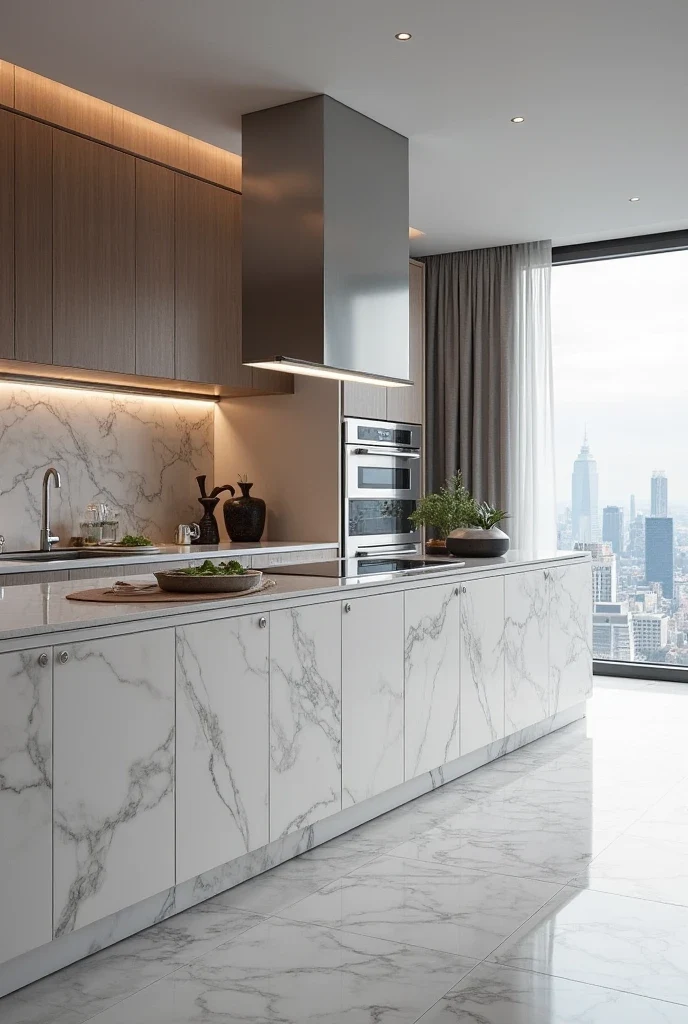
Create sophisticated focal points through single-slab units that hide all functional elements behind seamless surfaces. Hidden appliances, integrated storage, and invisible hardware maintain clean lines while providing comprehensive kitchen functionality.
The slab approach represents ultimate minimalism while requiring careful planning to ensure all necessary functions remain easily accessible. Premium materials and flawless execution become essential when design elements cannot be hidden behind decorative details.
This design strategy appeals to homeowners who prioritize clean, uncluttered aesthetics and want their kitchens to feel more like art installations than functional workspaces.
Vintage-Inspired Shaker Units for Timeless Appeal
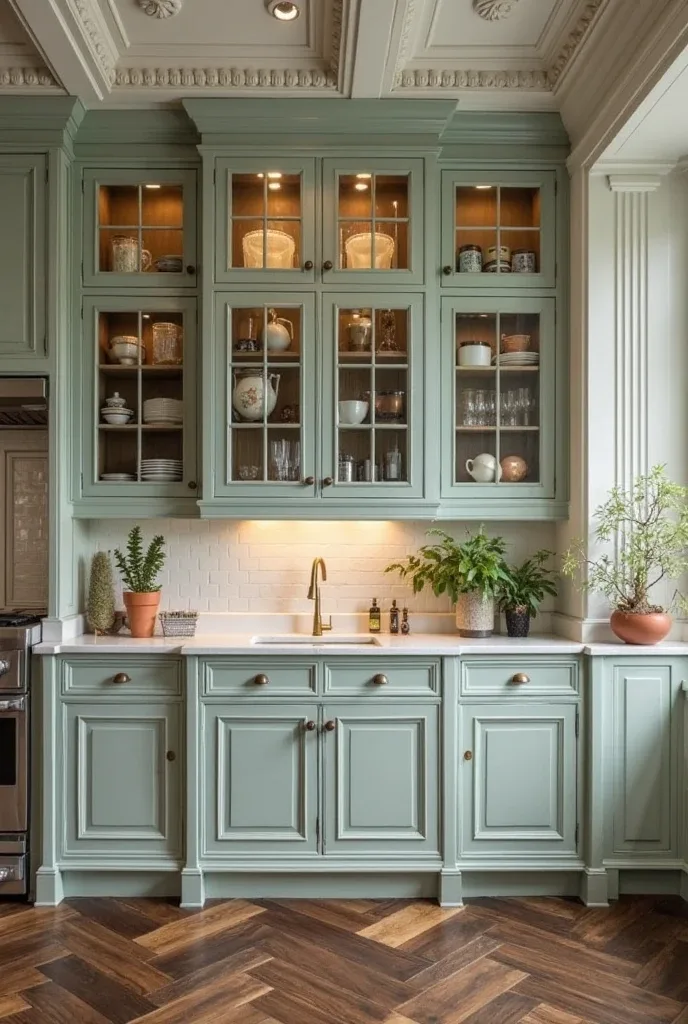
Reference traditional craftsmanship through updated Shaker-style units that combine classic proportions with contemporary functionality. Sage green coloring and brass hardware create sophisticated vintage appeal while modern storage solutions maintain practical efficiency.
The Shaker approach honors traditional cabinetry design while incorporating contemporary amenities and improved functionality. Classic proportions and quality construction ensure these units remain beautiful and relevant over time.
This strategy works well for homeowners who appreciate traditional design principles but want modern functionality and efficiency integrated seamlessly within classic aesthetic frameworks.
Integrated Dining Unit for Space Maximization

Combine kitchen storage with dining functionality through units that incorporate seating, wine storage, and serving areas within compact footprints. Pull-out stools and integrated lighting create complete dining experiences without requiring separate furniture.
The integrated approach maximizes functionality within limited space while creating social environments that encourage casual dining and conversation. Built-in wine storage and serving areas support entertaining while maintaining clean, organized appearances.
This design strategy appeals to urban homeowners or those with limited space who want maximum functionality without visual clutter or separate dining furniture requirements.
Stainless Steel Industrial for Professional Functionality
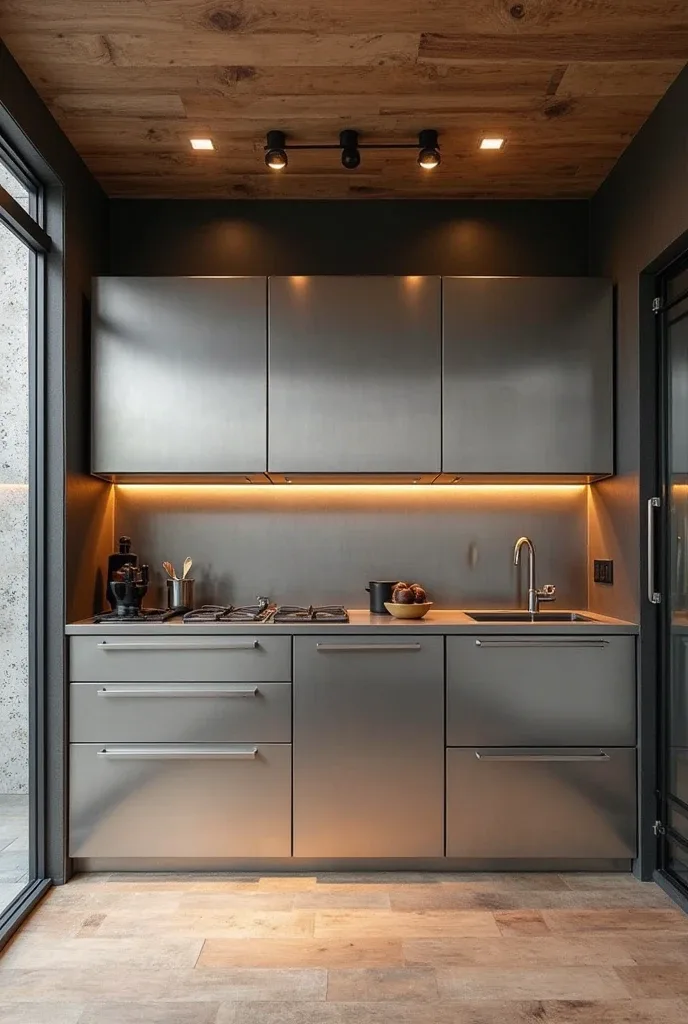
Create commercial-grade functionality through stainless steel units that provide superior durability and maintenance ease while maintaining sophisticated industrial aesthetics. Exposed hardware and rail systems add authentic professional kitchen references.
The industrial approach provides maximum durability and hygiene benefits while creating distinctive aesthetic appeal that references professional kitchen design. Stainless steel surfaces resist stains and damage while maintaining their appearance with minimal maintenance.
This strategy works well for serious home cooks who want professional-grade functionality or homeowners who appreciate industrial design aesthetics and superior material performance.
Also Read :13 Tiny Pool Ideas That’ll Create Spa-Like Luxury in Your Small Space
Vertical Wood Grain Tower for Maximum Storage
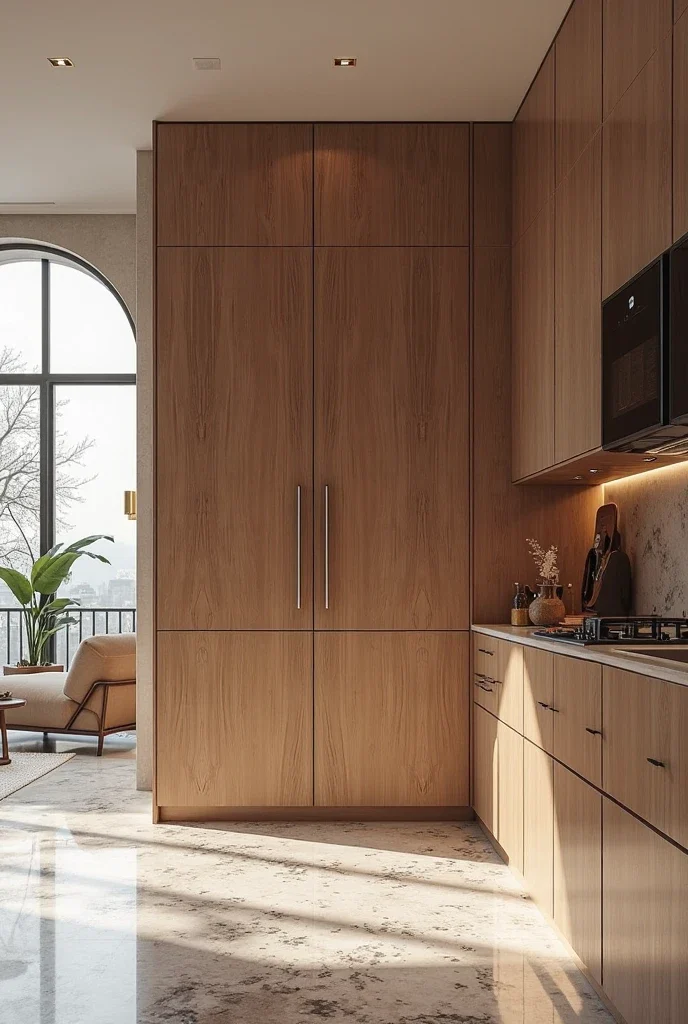
Maximize storage capacity through tall, narrow units that emphasize vertical space utilization while maintaining sophisticated material consistency. Continuous wood grain patterns create visual unity while extensive storage keeps countertops clear.
The tower approach takes advantage of vertical space that’s often underutilized while creating impressive architectural elements that draw eyes upward. Integrated appliance storage maintains clean lines while providing comprehensive functionality.
This design strategy works particularly well in kitchens with high ceilings where vertical emphasis can create dramatic architectural impact while maximizing storage efficiency.
High-Gloss Configuration for Comprehensive Coverage
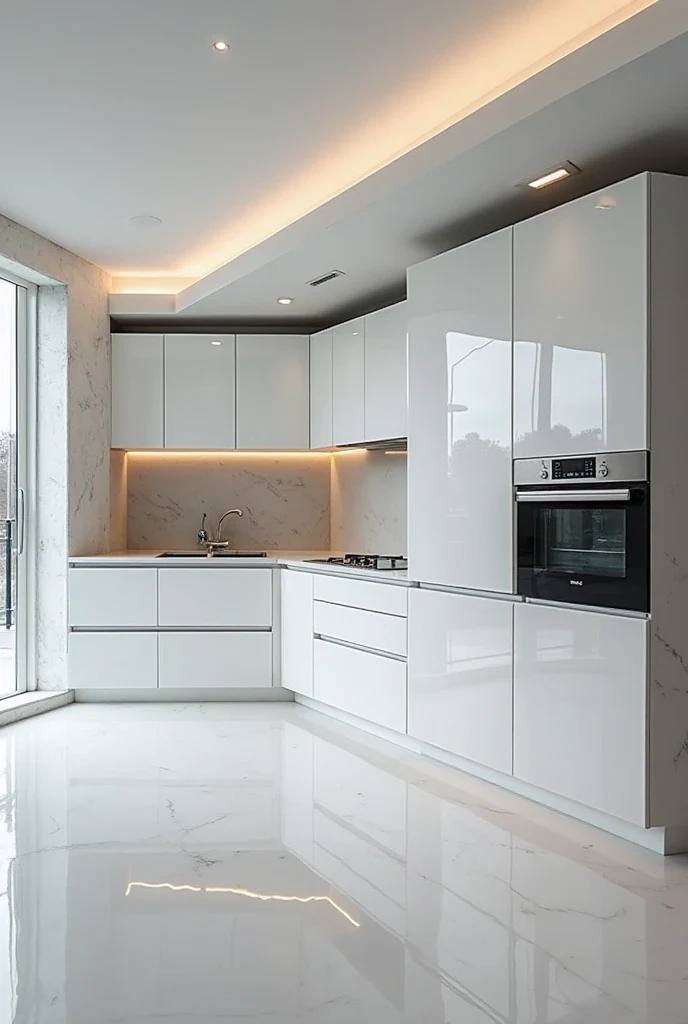
Create complete kitchen environments through unit configurations that provide maximum storage and work surface area while maintaining sophisticated aesthetic consistency. Handleless design and seamless appliance integration create unified appearances.
The U-shaped approach provides optimal workflow efficiency while creating enclosed kitchen environments that feel separate from adjacent living spaces. LED lighting and glossy surfaces reflect light effectively while creating bright, cheerful cooking environments.
This strategy works well for dedicated kitchen spaces where maximum functionality is prioritized while maintaining sophisticated design standards and comprehensive storage solutions.
Final Thoughts
The most successful kitchen units enhance both daily functionality and overall home aesthetics while adapting to changing needs and evolving lifestyles. These aren’t just storage solutions—they’re thoughtfully designed systems that make cooking more enjoyable, entertaining more impressive, and daily routines more efficient.
Choose kitchen unit approaches that align with your actual cooking habits, storage needs, and long-term vision for your home while considering maintenance requirements and material longevity. The best kitchen units will provide lasting satisfaction through both practical functionality and aesthetic appeal.
Remember that kitchen units represent significant investments in your home’s functionality and value. Focus on quality construction, timeless design principles, and flexible solutions that can adapt to changing needs rather than following temporary trends that may feel dated within a few years.
Start with one unit concept that addresses your most pressing kitchen challenge—whether it’s inadequate storage, poor workflow, or lack of visual appeal—and build your overall kitchen design around that functional foundation. The goal is creating a space that makes daily cooking more pleasant while providing the sophisticated aesthetics and practical efficiency that support your actual lifestyle.

